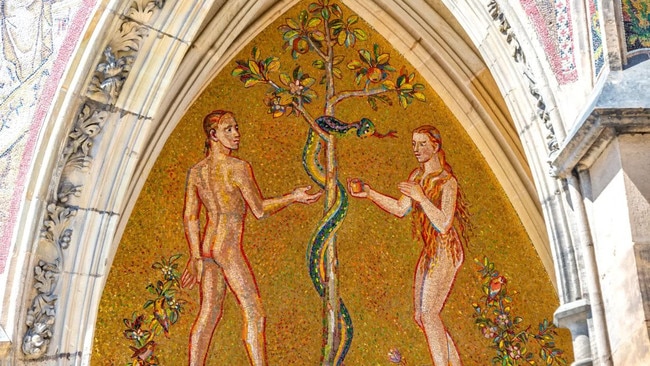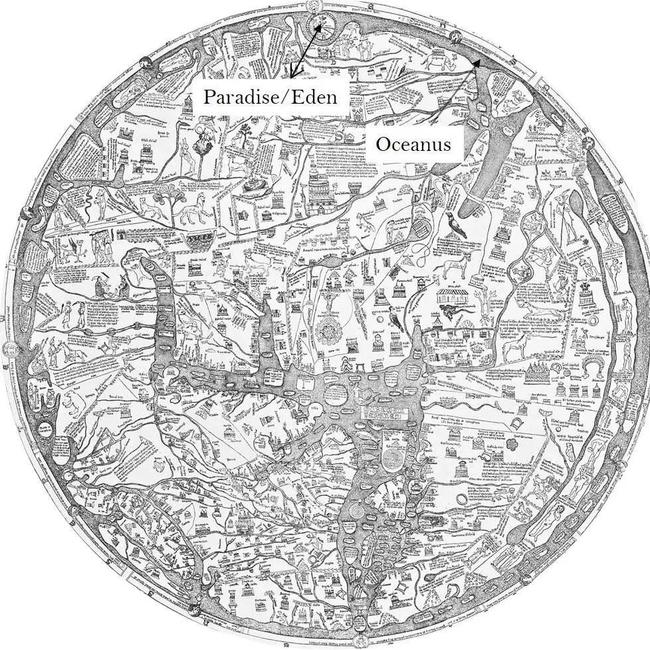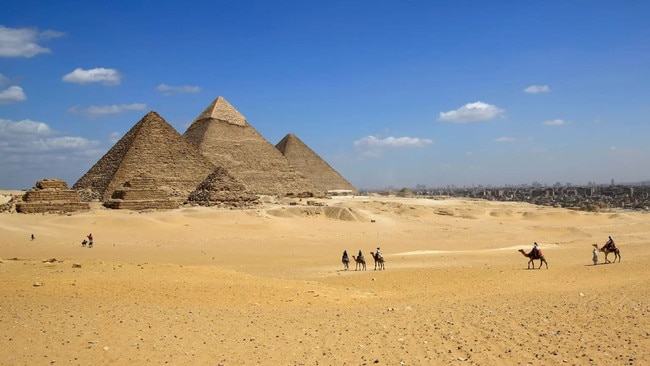‘Holy plot twist’: Shock claim on real Garden of Eden location
A bold new theory proposes that the Garden of Eden may have been in Egypt, near the Great Pyramid of Giza, not Mesopotamia.

Holy plot twist!
A provocative new theory suggests that the original Garden of Eden may not have been in Mesopotamia, roughly modern-day Iraq, as has been long-assumed — but rather in Egypt, under the towering shadow of the much older Great Pyramid of Giza.
Dr. Konstantin Borisov, a computer engineer, is shaking up biblical geography with a study published in the journal Archaeological Discovery, claiming the famed paradise where Adam and Eve once frolicked may have flourished on Egyptian soil.

The Bible describes a river flowing out of Eden that split into four branches — the Gihon, Pishon, Tigris, and Euphrates.
Scholars have long assumed Eden was in Iraq, home to the Tigris and Euphrates. But Borisov claims the ancient rivers could also correspond to the Nile (Gihon), Euphrates, Tigris, and the Indus River (Pishon).
“By examining a map from around 500BC, it becomes apparent that the only four rivers emerging from the encircling Oceanus are the Nile, Tigris, Euphrates and Indus,” Borisov wrote in his paper.
And he’s not stopping there — the scientist claims the sacred Tree of Life itself, said to bear fruit that grants eternal life, once stood near the Great Pyramid.
He believes the pyramid’s internal structure even mimics the shape of a tree.

“It cannot be overlooked,” he wrote, “the charge particles in this simulation are arranged in a way that creates several parallel branches extending outward from the centre line, creating a treelike representation.”
Borisov pointed to simulations from 2012 that modelled the pyramid’s King’s Chamber, showing charged particles clustering at the peak of the monument — producing light phenomena that resemble a glowing tree.
“While emitted from the pyramid, the charge particles collide with neutral nitrogen and oxygen atoms, leading to their ionisation, resulting in the release of photons, predominantly in shades of purple and green,” he wrote.
The “tree” in his simulation? It has five distinct branches — just like the five layered beams in the pyramid’s relieving chambers.

To bolster his theory, Borisov turned to ancient texts and medieval maps — including the 13th-century Hereford Mappa Mundi, which shows a circular Earth ringed by a mythical river called Oceanus.
At the map’s top is “Paradise,” nestled beside the river’s edge.
Ancient historian Titus Flavius Josephus also backs up parts of Borisov’s vision.
In Antiquities of the Jews (Book 1, Chapter 1), Josephus wrote: “Now the garden was watered by one river, which ran round about the whole earth, and was parted into four parts.”
Josephus also identified the four biblical rivers with real-world equivalents: “Phison… running into India, makes its exit into the sea… Euphrates also, as well as Tigris, goes down into the Red Sea… and Geon runs through Egypt,” he wrote, noting that Geon (Gihon) is the Ancient Greek name for the Nile.

According to Borisov, that means we already have the clues we need.
“At this point, all the rivers of the Bible are identified, and it seems that all we need is to follow the course of the Oceanus River around the globe to pinpoint the location of Eden,” he wrote — though he concedes he still needs to “determine the precise course of Oceanus.”
Still, if he’s right, Egypt’s Great Pyramid may not just be a wonder of the ancient world — it could be the last surviving monument of biblical paradise.
This story first appeared in the New York Post and was republished with permission.
Originally published as ‘Holy plot twist’: Shock claim on real Garden of Eden location




